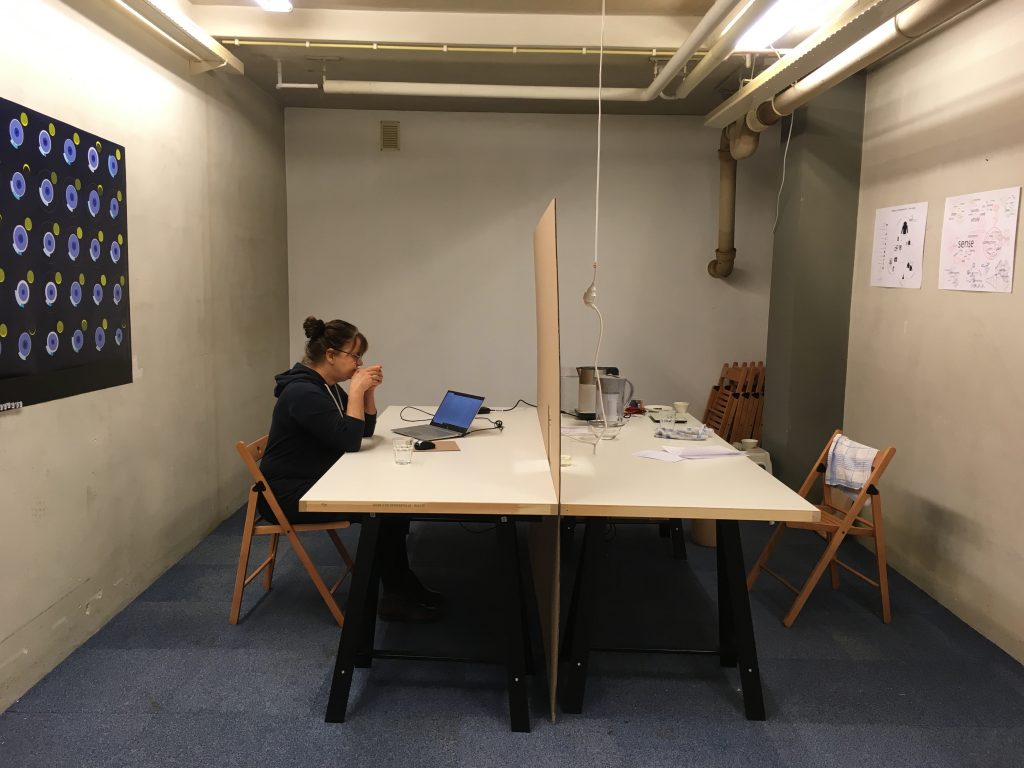
Introduction
This experiment aims to clarify which tea is the most appropriate for use during the Magic Tea ceremony. Earlier research by the author has resulted in the following the design criteria for the tea to be used: as natural and unprocessed as possible, aesthetically pleasing, evoke curiosity, may be unfamiliar. In collaboration with a trader of Chinese teas three possible candidates were picked. All three teas are quality teas but with very different characteristics (Fig. 2). The research question is: which of the teas scores best across multiple senses (smell, sight, taste, feeling) in relation to 6 factors of enlightenment (attention, interest, energy, joy, calm and concentration), relaxation and wholeness? The hypothesis was that the Jade Oolong matched the criteria best and would receive the highest score.
Method
The experiment follows the procedure of a tea tasting but is extended to seeing and feeling as well. Participants are invited to look, feel and taste the tea at all phases of preparation. Three teas were tested:
- Taiping Houkui 2019, China
- Zhu Ye Qing roasted, China
- Jade Oolong from Nantou, Taiwan
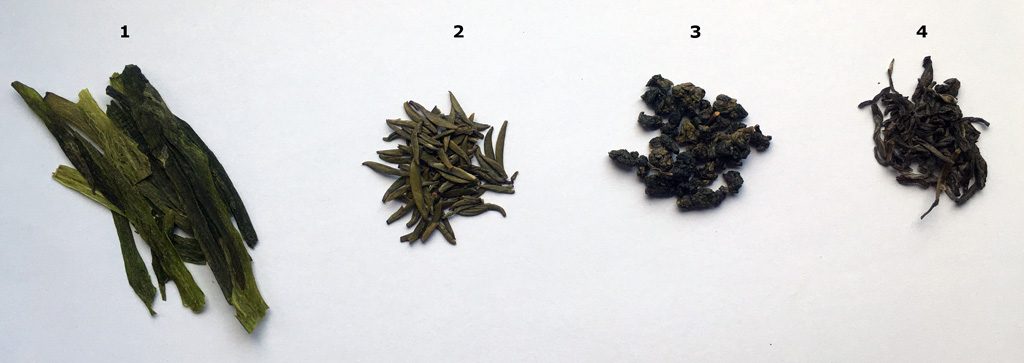
All are premium quality and exclusive teas available only from specialist shops. The fourth tea was Yen Bai Green from Vietnam which acted as a control tea. This is a medium quality tea, suitable for non-seasoned drinkers.
The brewing of the tea took place behind a screen so as not to distract the participants from experiencing the tea (Fig. 1). Of every tea type 250 ml was made using one gram of tea for each type. Fresh filtered (Zero-water filter) and boiled water was used for every “pot”. Each tea was severed in a 125 ml white bowl. Surplus tea was put in a glass and could be consumed it needed or wanted (Fig. 3). Eight people took part in the experiment including the author.
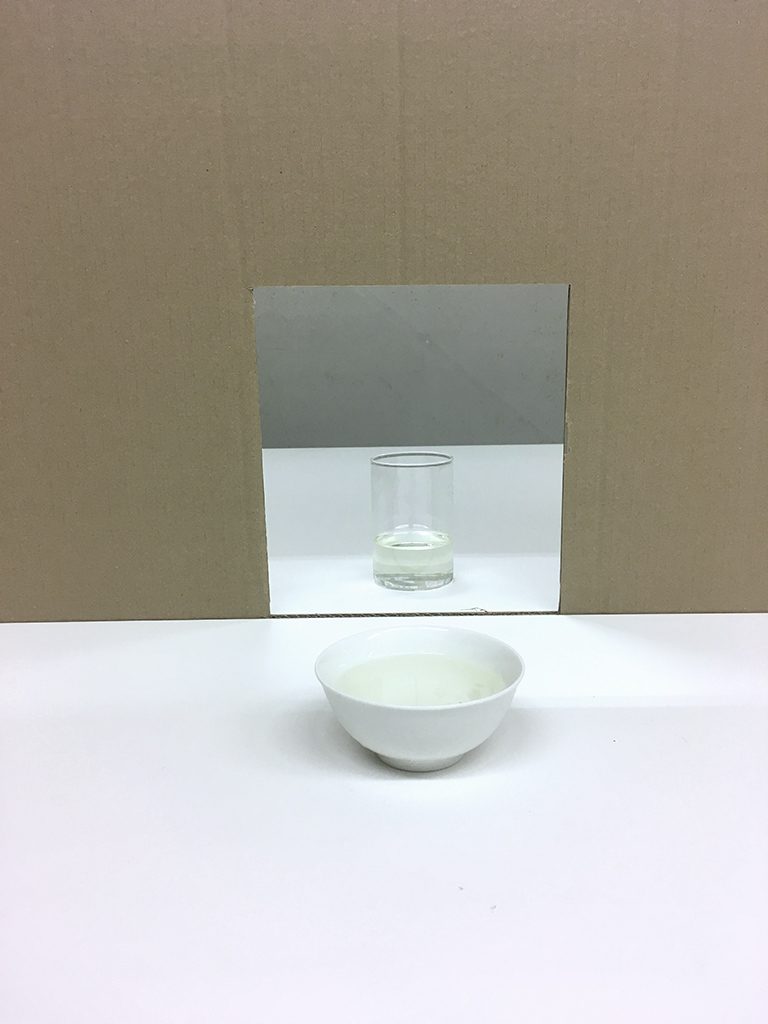
Experiment design
The tasting of each tea was accompanied by a set of questions and the possibility to make remarks both written and aural. Fig. 4 depicts the experiment design which started with a baseline measurement followed by the tasting of all four teas in random order. After each tea participants we invited to neutralise their taste buds by taking some water.

For every tea participants were asked whether smelling, seeing, tasting and feeling this tea evoked in them feelings of: relaxation, attention, interest, joy, energy, calm and concentration. These are six of the seven factors of enlightenment. The stress level was put in as a control variable. All could be scored on a 5 point labelled scale ranging from Not at all to Very much.
Finally participants were asked about their feeling of wholeness using Christopher Alexanders’ Mirror-of-the-self test: When I am drinking this water/tea, I feel completely human. Should reincarnation exist I would like to reincarnate as this beverage. How much do you agree with this statement? People could again score of the 5 point scale.
In a free form text field people could write down comments if needed.
Results
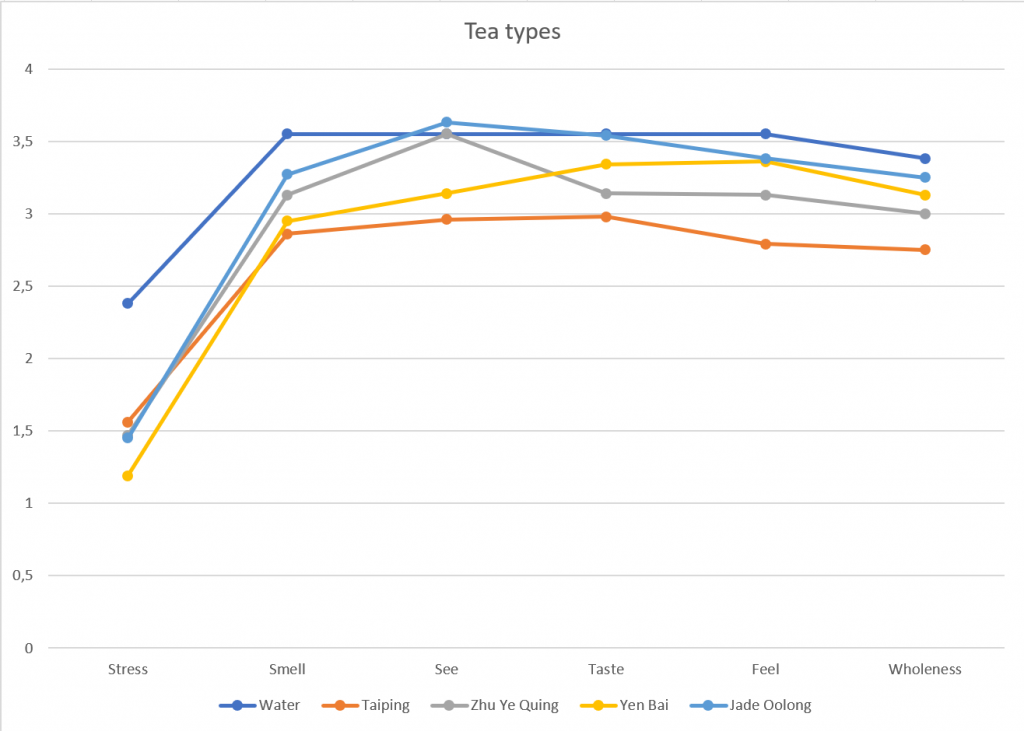
Fig. 5 shows the outcomes for the tea types. Stress was calculated by taking the means of stress for smelling, seeing, tasting and feeling. The four sense outcomes were calculated by taking the means of the six factors of enlightenment (attention, interest, energy, joy, calm and concentration) for each sense. Wholeness was just one value for every tea so no further calculation was needed.
The baseline used water as the input for wholeness. The six factors were not coupled to a sensory experience but applied to how people were generally feeling at that moment, so it is a more general measure. Stress was highest during baseline but all other scores are more positive then the tea measurements, including wholeness.
The Jade Oolong tea scores highest of all the teas for all the senses and wholeness (Fig. 5, light blue line). Stress values are also low. The tea with the least positive effects is the Taiping (Fig. 5, orange line). Especially taste and feeling are low compared to the other teas.
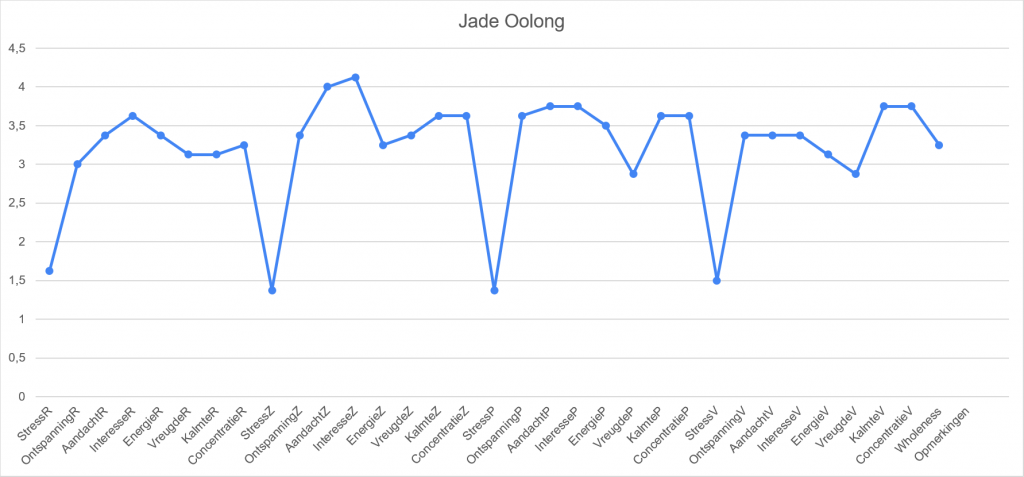
The sense contributing most to the success of the Oolong tea is sight (3.63). Across the senses attention, interest, calm and concentration score high (Fig. 6).
Participants commented on the beauty of the tea, the dynamic process of the leaves unfolding and the pleasant taste.
Conclusion
From the design criteria formulated earlier it was clear that users preferred natural looking tea leaves. In collaboration with a trader of Chinese teas three possible candidates were picked. These were supplemented by one control tea. The Oolong tea from Taiwan was hypothesised to be the most suitable. The results from this experiment confirm this hypothesis. From all the teas tested the Jade Oolong tea scored low on stress level and high on six factors of enlightenment in relation to smell, sight, taste and feeling. The wholeness score was also highest of all teas. However non of the teas surpassed the baseline measurement in which participants were asked the current status on 6 factors of enlightenment and were asked to do the mirror of the self test (wholeness) on a glass of water. All teas did score more favourable on the stress value.
Discussion
The outcomes may have been influenced by: 1) the setting. Some participants indicated that the setting caused them stress. Some worried about having enough time. 2) The tasting process. People indicated that there is a learning curve in tasting and felt they hadn’t done justice to the first tea they tasted. While two participants indicated that they found the smell much more prominent then the taste and couldn’t really differentiate between the tastes, another participant indicated that the taste was the most prominent sense. So the ability to taste differs a lot between participants.
Looking back the question on wholeness could have been posed more correctly if it had mentioned the whole process instead of just the tasting of the tea.
The Yen Bai (control tea) scored high. This was the least extreme looking and tasting tea. It was easier for participants to relate to as is indicated by the low stress score and the high scores on taste and feeling. But the aim of the experiment wasn’t to find the most pleasant tea but to find the one most supportive of the aim of the whole ceremony: create a transcendent experience
Almost all participants had strong associations with and expectations of what they were going to taste from smelling and seeing the teas. This definitely influences the taste. Participants for example reported a salty taste for tea that looks a bit like seaweed and reported bitterness in the most mild tasting tea where they expected a citrus taste. However these expectations and associations are not problematic, the aim was to gather information on the experience of the teas on all of the senses. The surprise element might be helpful in inducing awe and wonder during the whole process of making tea. An unexpected taste might strengthen the disequilibrium needed to create a transcendent experience
The general aim of Magic Tea is to reduce suffering through insight and transcendence. But providing tea which reduces stress, generates calm, interest, wholeness and other positive mind states is already a very valuable step in creating a positive change in peoples lives.
In collaboration with: Avans University of Applied Sciences, Centre of Applied Research for Art, Design and Technology (CARADT)